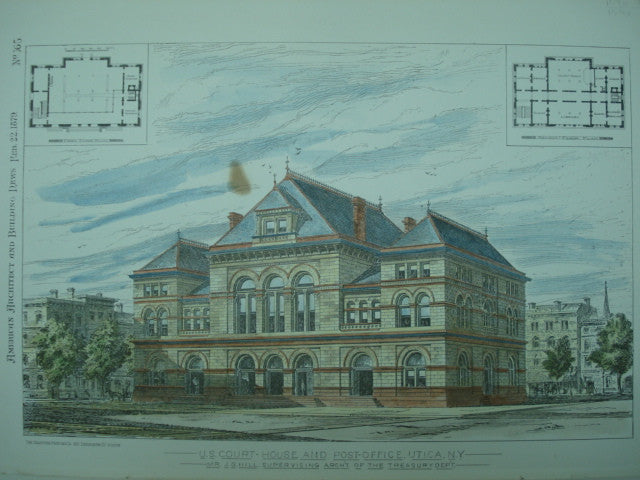US Goes on the Gold Standard in 1879 August 10 2015
This is the fourth installment in our series of posts comparing significant events from a year in United States history with a few of our unique architectural plans from the same period. 1879, the topic of this installment, marks the fourth year of the American Architect and Building News' existence.
Click on the pictures to find the plans below in our store!
1879 brought into the effect the Specie Resumption Act within the United States. For the first time since before the Civil War, the value of paper currency within the nation became equal to that of gold. This led to more faith in the American economy by consumers, and a willingness to spend their money in stores, such as these on Devonshire and Summer Streets in Boston, Massachusetts. These were designed by notable Boston architects Cummings & Sears and can be found in wonderful detail on the plan below.
Frank Winfield Woolworth founded the first of what would become numerous of his famous Woolworth stores in 1879. Located in Utica, New York, these revolutionary new stores sold items at the firm price of five- and ten-cents apiece; a new idea at the time, as previous vendors usually would sell their items at prices determined by haggling. These stores created the shopping experience we're used to today, so much so that their "Five-and-Dimes" name still persists in the common American vernacular. The plan below depicts the United States Court House and Post Office in Utica, New York, designed by J. G. Hill in 1879. This building would have been just down the street from the first of Mr. Woolworth's soon-to-be famous stores.


